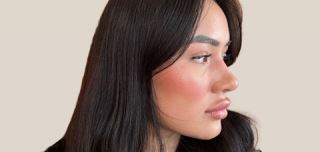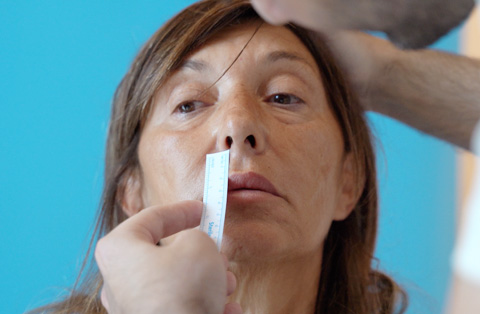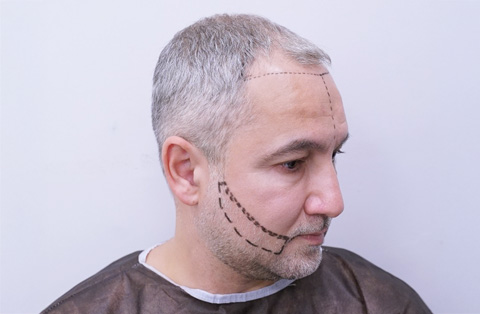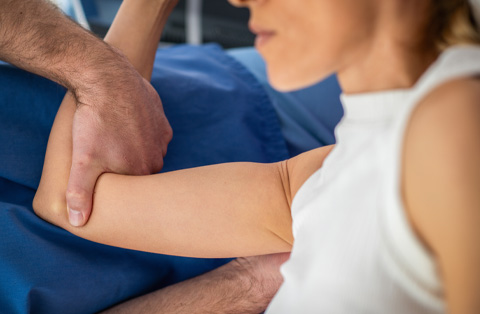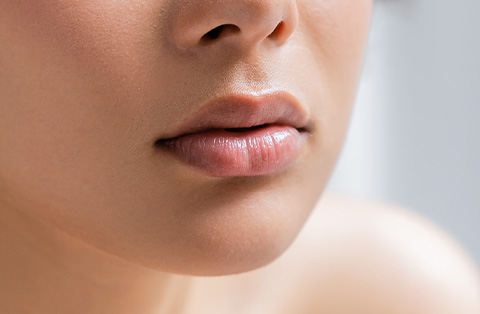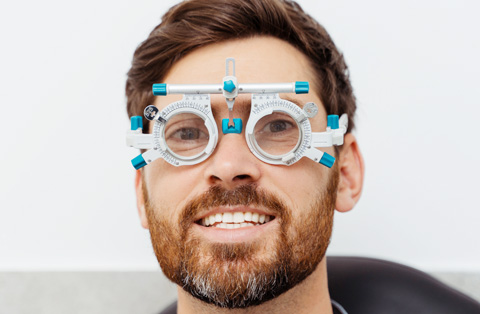Lip augmentation is a cosmetic procedure that uses dermal fillers to add volume, enhance contour, and define your natural lip shape.
Whether you’re looking to correct asymmetry, restore fullness lost with age, or simply refine your look, fillers can help you achieve subtle or dramatic results, depending on your goals. According to the American Society of Plastic Surgeons, lip filler treatments performed nearly 1,5 million times in 2024.
In this guide, we’ll explain how lip filler shapes work, explore which styles fit different face types, break down injection techniques, and help you choose the right shape to enhance your natural beauty safely and effectively.
What Is Lip Augmentation?
Lip augmentation is a cosmetic procedure that enhances the volume, shape, and definition of the lips using injectable dermal fillers. The goal is to create fuller, more balanced lips while preserving natural proportions.
Most lip augmentations use hyaluronic acid fillers, a substance naturally found in the body. These fillers add structure and hydration, making the lips appear plumper and smoother. Popular brands include Juvederm®, Restylane®, and Teosyal®.
How Do Fillers Enhance Your Natural Beauty?
Fillers enhance your natural beauty by restoring volume, improving symmetry, and refining lip contours without altering your facial identity. The goal is to support your features, not replace them.
What Are the Aesthetic Benefits of Lip Fillers?
Volume restoration: Fillers add fullness to thinning lips caused by aging or genetics.
Symmetry correction: They adjust uneven lip shape, balancing the upper and lower lips.
Definition enhancement: Fillers sharpen the Cupid’s bow and vermilion border, making the lips appear more defined.
Proportional harmony: Well-placed fillers align lip volume with other facial features for balanced aesthetics.
How Subtle Changes Improve Overall Facial Appearance
Small enhancements can:
Soften nasolabial folds and marionette lines indirectly
Improve facial proportions, especially from the side profile
Give lips a hydrated, youthful look
Why Natural Enhancement Matters
Modern filler techniques focus on subtle volume and shape improvement, avoiding exaggerated results. According to a 2023 study in Aesthetic Surgery Journal, patients prefer refined, natural-looking lips over dramatic augmentation.
What Does Lip Anatomy Tell Us About Choosing the Right Lip Filler Shape?
Lip anatomy plays a central role in choosing the right lip filler shape. Understanding structural details helps injectors enhance the lips safely and naturally without distorting proportions or function.
What Are the Key Anatomical Features of the Lips?
To choose the right lip filler shape, you need to understand these key components:
Vermilion border: The line between the colored lip and surrounding skin. Enhancing this border improves definition.
Cupid’s bow: The V-shaped curve at the center of the upper lip. Filler can accentuate or soften it.
Philtrum columns: The vertical ridges running from the nose to the upper lip. Defined columns add youthful contour.
Oral commissures: The corners of the mouth. They influence symmetry and should not be overfilled.
Lip body: The fleshy part of the lips. This is where volume is added for fullness.
Why Is Lip Proportion Important?
Natural lips follow the golden ratio, where the bottom lip is typically 1.6 times fuller than the top lip. Disrupting this balance can lead to unnatural results.
Anatomy also determines limits. For example:
Thin lips may not tolerate high volume.
Flat Cupid’s bows may not suit sharp central peaks.
Short philtrums limit vertical filler height.
How Does Anatomy Guide Injection Technique?
Experienced practitioners adjust filler techniques based on each patient’s anatomy. For instance:
A well-defined vermilion border requires less product.
Weak philtrum support may need structural enhancement first.
Asymmetry in oral commissures affects how filler is distributed.
What Are the Most Popular Lip Filler Shapes?
The most popular lip filler shapes vary by aesthetic trends, facial structure, and personal preference. Each shape aims to enhance specific features, such as volume, symmetry, or projection, while respecting natural lip anatomy.
Here are the most widely requested lip filler shape options:
Heart-Shaped Lips:

Fuller in the center with a defined Cupid’s bow. Ideal for patients with a natural V-curve in the upper lip.
Russian Lips:

Vertical height is emphasized, with a flat horizontal edge and sharp central peaks. Popular for a structured, doll-like look.
Classic or Natural Lips:

Subtle volume and contouring that preserve the lips’ original shape. Often used for first-time patients or those wanting discreet enhancement.
Full and Round Lips:

Even volume across upper and lower lips. Creates a soft, pillowy appearance.
Pearl Lips:

Accent on the middle third of the lip. This shape gives a bead-like fullness and is common in Asian beauty trends.
How Do These Styles Differ in Technique?
Each shape uses specific filler techniques:
Heart-shaped styles often involve more filler in the center of the lips.
Russian lips use small, vertical injections to avoid horizontal expansion.
Natural lips rely on minimal filler at the vermilion border and body.
Which Lip Filler Shape Matches Your Face Type Best?
The right lip filler shape depends heavily on your face type, lip proportions, and overall aesthetic goals. Matching filler style to facial structure ensures balance, harmony, and natural-looking results.
How Does Face Shape Influence Lip Filler Choice?
Different face shapes benefit from different lip filler styles:
Oval face: Most versatile. Works well with classic, heart-shaped, or Russian lips depending on features.
Round face: Fuller cheeks pair best with natural lips or subtle central volume to avoid exaggerating width.
Square face: Strong jawlines benefit from soft curves and added Cupid’s bow definition to bring balance.
Long face: Can tolerate more vertical volume, making Russian lips or full and round lips effective choices.
Heart-shaped face: Emphasizing the lower lip balances the narrow chin, often with pearled or bottom-heavy filler styles.
Why Proportion and Symmetry Matter?
The goal is to enhance lips while maintaining facial proportion. Overfilling or choosing the wrong shape can:
Disrupt the golden ratio (ideal lower-to-upper lip ratio is 1.6:1)
Create imbalance between lips, nose, and chin
Exaggerate facial asymmetry
A skilled injector will assess your lip anatomy, skin structure, and face type before recommending a filler shape.
How Does Age Affect Your Lip Filler Choices?
Age influences lip filler choices by affecting skin quality, lip volume, and aesthetic goals. Younger patients often seek volume or definition, while older individuals prioritize structure, hydration, and rejuvenation.
What Happens to Lips as We Age?
Aging leads to several anatomical changes that affect filler strategy:
Volume loss: The lips become thinner and flatter due to collagen and fat reduction.
Skin laxity: Surrounding tissues sag, blurring the vermilion border.
Vertical lip lines: Fine wrinkles develop above the upper lip.
Lip elongation: The distance between the nose and upper lip (philtrum) often increases.
How Do Filler Goals Differ by Age?
In your 20s to early 30s:
Goals: Volume, symmetry, definition.
Styles: Russian lips, heart-shaped, or natural contouring.
Technique: Superficial injections for shape, using soft fillers like Juvederm® Volbella.
In your late 30s to 50s+:
Goals: Restore structure, reduce lines, correct asymmetry.
Styles: Classic lips with defined borders; subtle projection.
Technique: Deeper injections, possibly layering fillers (e.g., Restylane® Refyne for elasticity).
Why Is Filler Technique Age-Specific?
Older lips require:
Careful volume placement to avoid distortion.
Emphasis on hydration and structural support.
Combination treatments (e.g., botulinum toxin for upper lip lines).
How Do Different Lip Enhancement Techniques Influence Lip Shape?
Different lip enhancement techniques directly affect the final lip shape, volume distribution, and overall outcome. Each technique involves specific injection depths, angles, and filler placement patterns that target unique structural or aesthetic goals.
What Are the Most Common Lip Injection Techniques?
Linear threading:
The injector inserts the needle along the lip and injects filler while withdrawing. It creates smooth, even volume, often used in the lip body.Serial puncture:
Small amounts of filler are injected at multiple points. This method offers precision, ideal for border definition or correcting asymmetry.Depot or bolus technique:
The filler is injected in small, localized "boluses" to create focal volume. It’s often used in the Cupid’s bow or oral commissures.Microdroplet technique:
Delivers tiny filler amounts at shallow depths, suitable for smoothing fine lines and enhancing lip texture without changing shape significantly.Tent technique (used in Russian lips):
Vertical injections along the lip’s height enhance vertical projection without adding width, suitable for defined, structured results.
How Does Technique Impact the Final Lip Filler Shape?
Russian lips require vertical injections for height and a crisp Cupid’s bow.
Natural lips rely on minimal filler placed along the vermilion border and subtly into the lip body.
Heart-shaped lips often use more filler centrally to create a curved, midline-dominant look.
Full and round lips are achieved by evenly distributing filler through linear or bolus techniques across both lips.
How Does Your Skin Structure Influence the Right Lip Filler Technique?
Your skin structure determines which lip filler technique will produce safe, effective, and natural-looking results. A one-size-fits-all approach doesn’t work, especially when skin quality varies by age, genetics, and lifestyle.
What Skin Factors Should Be Considered Before Lip Augmentation?
Skin thickness:
Thinner lips or perioral skin are more prone to visible lumps and bruising. These require softer fillers and microdroplet or serial puncture techniques.Elasticity and collagen density:
Good elasticity allows for more flexible volume placement. In contrast, low elasticity—common in mature patients—requires layered injections and slower filler build-up to prevent migration.Subcutaneous fat distribution:
People with less fat in the lips or face need precise filler placement and possibly combination treatments (e.g., structural filler support).Hydration level and tissue quality:
Dehydrated or sun-damaged skin may need a hydrating filler (e.g., low-crosslinked hyaluronic acid) and conservative volume strategies.
How Can You Enhance Your Natural Beauty With Lip Filler Injections?
Skin Feature | Recommended Technique | Reason |
Thin, delicate skin | Microdroplet or serial puncture | Reduces risk of lumpiness |
Mature, loose tissue | Layered injection | Adds structure and avoids migration |
Thick, dense lips | Linear threading or bolus | Allows for more volume and projection |
Uneven fat distribution | Targeted bolus + contouring | Improves symmetry and balance |
How Long Do Different Lip Filler Shapes Last?
The longevity of lip filler shapes depends on three main factors: type of filler used, injection technique, and how the filler is distributed across the lips. Most lip fillers are made of hyaluronic acid (HA), which the body gradually breaks down over time.
What’s the Average Duration of Lip Fillers?
Hyaluronic acid-based fillers (e.g., Juvederm®, Restylane®, Teosyal®):
Last 6 to 12 months, depending on product density, patient metabolism, and technique.Soft fillers used for natural or pearl-shaped lips tend to fade faster—around 4 to 6 months—due to superficial placement and less crosslinking.
Structured fillers for Russian or heart-shaped lips may last 8 to 12 months, especially when injected deeper or with higher viscosity gels.
Can Lifestyle or Anatomy Shorten Results?
Yes. Factors that reduce filler duration include:
High metabolism
Smoking
Frequent lip movement (e.g., expressive speech, kissing, or smoking)
Sun exposure or inadequate skincare
What Are the Risks and How Can You Choose the Safest Lip Filler Style?
Every lip filler treatment carries some degree of risk, but proper planning, technique, and product selection can minimize complications. Choosing the safest lip filler style means respecting your anatomy, using the right filler type, and working with a medically qualified injector.
What Are the Most Common Risks of Lip Filler Injections?
Lip Filler Swelling and bruising:
These occur in nearly all patients and usually resolve within 3–7 days.Lip Asymmetry:
Overcorrection or uneven filler placement can lead to visible imbalance. Often correctable with touch-ups.Lumps or nodules:
Caused by superficial injection or poor filler integration. Usually dissolvable with hyaluronidase.Vascular occlusion:
A rare but serious complication where filler blocks a blood vessel. Can lead to tissue damage if not treated promptly.Infection:
Rare with proper hygiene, but possible if skin is not cleaned or aftercare is poor.
How to Determine the Right Lip Filler Shape for You?
Determining the right lip filler shape involves evaluating your facial structure, lip anatomy, aesthetic goals, and lifestyle. The best results come from customizing the filler style, not copying trends.
What Factors Should You Consider?
Face shape:
Your lips must harmonize with your overall facial proportions. For example, round faces suit subtle volume, while long faces tolerate more vertical lift.Lip structure:
Assess the natural Cupid’s bow, vermilion border, and lip body volume. Thin lips may not support high-volume styles like Russian lips.Personal style:
Ask yourself: Do you want a subtle, natural enhancement, or something more defined and dramatic like heart-shaped or Russian lips?Lifestyle and maintenance:
Some shapes (e.g., Russian lips) require more frequent upkeep. Consider how often you're willing to return for touch-ups.
What Should You Discuss With Your Injector?
Photographic references of your desired look
Your history with fillers or allergies
How much volume you're comfortable adding
Whether you're open to combining with other treatments (e.g., Botox for perioral lines)
A personalized consultation should include:
Facial assessment (3D balance, asymmetry)
Lip movement analysis
Customized filler and technique plan
What Should Men Know About Lip Fillers?
Men considering lip fillers often seek subtle, masculine enhancement without overfilling or feminizing the lips. While the fundamentals of injection remain the same, male lip anatomy, goals, and aesthetics require different strategies.
How Is Male Lip Anatomy Different?
Flatter Cupid’s bow:
Most men have a less defined upper lip contour.Wider mouth structure:
Male lips are typically broader, requiring different volume distribution.Thicker skin and stronger muscle tone:
These traits influence how filler spreads and how much volume is needed.
What Aesthetic Goals Do Men Typically Have?
Enhance definition without adding excessive volume
Improve lip symmetry or correct asymmetries
Restore volume lost with aging
Maintain a natural, understated appearance
Most men prefer:
Classic or natural lip filler styles
Minimal augmentation focused on the lower lip or vermilion border
Avoiding overly sculpted shapes like Russian or heart-shaped lips
Frequently Asked Questions
What is the most natural-looking lip augmentation?
The most natural-looking lip augmentation uses soft, hyaluronic acid-based fillers with conservative volume. Techniques like microdroplet or linear threading enhance shape and hydration without overfilling. Styles such as the natural contour or classic lips preserve your lip’s original anatomy while subtly improving symmetry, definition, and proportion.
What are the different types of lip augmentation?
Lip augmentation includes injectable fillers, fat grafting, lip lift, and lip implants. Hyaluronic acid fillers are the most common, offering temporary, adjustable results. Fat grafting transfers your own fat for longer-lasting volume. Lip implants provide permanent enhancement but carry higher risk. Each method suits different goals, budgets, and anatomical needs.
What lip shape is most attractive?
The most attractive lip shape depends on facial harmony, but studies suggest a balanced 1:1.6 ratio between the upper and lower lips is often preferred. A well-defined Cupid’s bow, smooth contours, and proportionate volume enhance appeal. Natural-looking, symmetrical lips that fit your facial structure tend to be most attractive.
Are lip fillers permanent?
No, lip fillers are not permanent. Most are made from hyaluronic acid, which the body naturally breaks down over 6 to 12 months. Longevity depends on the filler type, technique, metabolism, and lifestyle. For longer results, repeat treatments or alternative methods like fat grafting may be considered.
